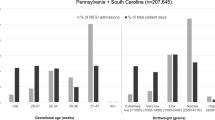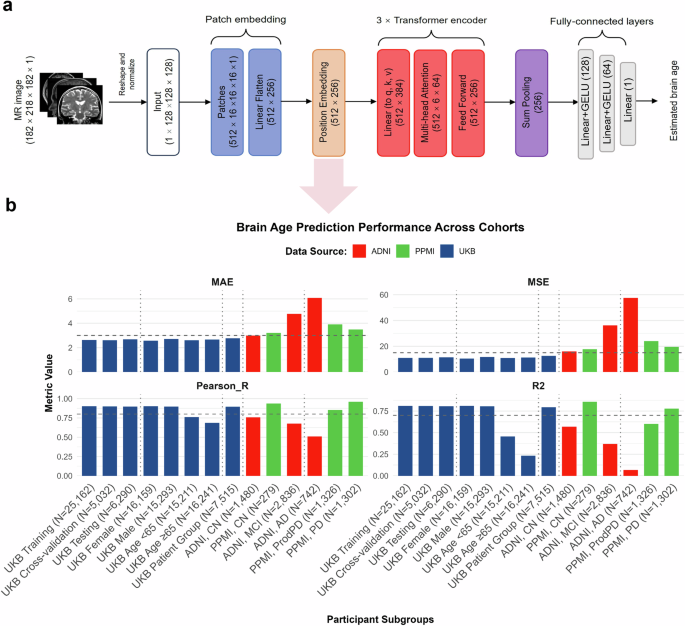Report on the Association of NICU Capacity Strain with Neonatal Mortality and Morbidity
Executive Summary
A retrospective cohort study conducted in South Carolina from 2008 to 2021 investigated the impact of Neonatal Intensive Care Unit (NICU) capacity strain on infant health outcomes. The study analyzed data from 64,647 infants across 30 hospitals. Findings indicate a significant association between high admission capacity strain and an increased risk of neonatal mortality and morbidity. This report reframes these findings through the lens of the United Nations Sustainable Development Goals (SDGs), primarily focusing on SDG 3 (Good Health and Well-being), SDG 10 (Reduced Inequalities), and SDG 9 (Industry, Innovation, and Infrastructure). The results underscore that managing healthcare system capacity is critical for achieving global health targets, reducing health disparities, and building resilient infrastructure.
Introduction and Alignment with Sustainable Development Goals
The health and survival of newborns are fundamental indicators of a society’s progress towards global development targets. This report examines the relationship between NICU operational pressures and adverse neonatal outcomes, highlighting its direct relevance to several Sustainable Development Goals.
Primary SDG Focus: SDG 3 (Good Health and Well-being)
This research directly addresses SDG Target 3.2, which aims to end preventable deaths of newborns and children under five. The study’s finding that high NICU capacity strain is associated with increased neonatal mortality and morbidity demonstrates a systemic barrier to achieving this goal. Understanding and mitigating capacity strain is essential for improving the quality of care and ensuring every newborn has a chance to survive and thrive.
Secondary SDG Linkages
- SDG 10 (Reduced Inequalities): The study notes that infants exposed to typical capacity strain were more frequently born to Black birthing parents and those with government insurance. This suggests that capacity strain may disproportionately affect vulnerable populations, exacerbating existing health disparities and hindering progress towards Target 10.3, which seeks to ensure equal opportunity and reduce inequalities of outcome.
- SDG 9 (Industry, Innovation, and Infrastructure): NICU capacity is a component of critical health infrastructure. The study’s findings highlight the need for resilient and efficient healthcare systems, as called for in Target 9.1. Effective management of patient load, acuity, and resources is an infrastructural challenge that impacts public health outcomes.
Methodology
Study Design and Population
- Design: A retrospective cohort study utilizing linked vital statistics and hospital discharge data.
- Period: 2008–2021.
- Cohort: 64,647 infants of 22–44 weeks gestational age (GA) from 30 hospitals in South Carolina.
- Inclusion Criteria: Infants born at hospitals with at least a level 2 NICU and a minimum of 5 births per year of infants under 34 weeks GA.
Exposure and Outcome Measures
- Exposure: Admission capacity strain, measured in deciles. It was defined as the standardized daily census of high-risk infants (infants ≤44 weeks GA with a congenital anomaly plus all infants <34 weeks GA).
- Primary Outcome: A composite measure including neonatal mortality and significant complications for both term and preterm infants.
Statistical Analysis
Poisson generalized linear mixed models were used to analyze the association between capacity strain and the primary outcome. The models were adjusted for a comprehensive set of patient-level and hospital-level characteristics to isolate the effect of capacity strain.
Key Findings
Overall Association
After adjusting for patient and hospital factors, high NICU capacity strain at the time of admission was significantly associated with an increased risk of the composite outcome of mortality and morbidity. The highest decile of capacity strain was associated with a 14% increased risk (adjusted Incidence Rate Ratio [aIRR] 1.14, 95% CI 1.03–1.27) compared to the second decile.
Disaggregated Findings
- Preterm Infants: For preterm infants, higher deciles of capacity strain (eighth and ninth) were associated with an increased risk of adverse outcomes after full adjustment.
- Term Infants: No significant association was found between capacity strain and adverse outcomes for term infants after adjustment, suggesting preterm infants are more vulnerable to the effects of system strain.
- Alternative Measures: The number of daily NICU admissions, an alternative measure of strain, was not found to be associated with adverse outcomes after adjustment, indicating that the acuity-adjusted census is a more relevant metric.
Discussion and Policy Implications for SDGs
Implications for SDG 3 (Good Health and Well-being)
The study provides clear evidence that systemic factors, not just individual patient acuity, drive neonatal outcomes. To make progress on SDG Target 3.2, health systems must move beyond patient-level interventions and focus on optimizing operational capacity. Policies should be developed to monitor and manage NICU census and acuity to prevent periods of high strain that compromise care quality.
Implications for SDG 10 (Reduced Inequalities)
The demographic data associated with capacity strain suggests that resource allocation and patient distribution patterns may perpetuate health inequities. Addressing capacity strain is a matter of health equity. Strategies could include regional coordination of neonatal care to balance patient loads and ensure that hospitals serving vulnerable populations are adequately resourced to handle patient surges, thereby contributing to Target 10.3.
Implications for SDG 9 (Industry, Innovation, and Infrastructure)
The findings call for investment in smarter, more resilient health infrastructure. This includes not only physical beds but also robust systems for staffing, patient flow management, and resource allocation. Innovations in predictive analytics could help hospitals anticipate periods of high strain and proactively adjust resources, aligning with the goal of building effective and resilient infrastructure (Target 9.1).
Conclusion
High NICU capacity strain is a significant, independent risk factor for neonatal mortality and morbidity. This issue is deeply interconnected with the Sustainable Development Goals, particularly those concerning health, equality, and infrastructure. The findings of this study serve as a critical call to action for healthcare administrators, policymakers, and global health organizations. Mitigating NICU capacity strain through better resource management, equitable patient distribution, and investment in resilient health systems is essential for protecting the most vulnerable infants and advancing the global 2030 Agenda for Sustainable Development.
Analysis of Sustainable Development Goals (SDGs) in the Article
1. Which SDGs are addressed or connected to the issues highlighted in the article?
The article on the association of NICU capacity strain with neonatal mortality and morbidity is primarily connected to the following Sustainable Development Goals:
-
SDG 3: Good Health and Well-being
This is the most central SDG addressed. The article’s objective is to “examine the association of admission NICU capacity strain with neonatal mortality and morbidity.” It directly investigates health outcomes for a vulnerable population (newborns), focusing on factors that influence the quality of healthcare and patient survival, which is the core mission of SDG 3.
-
SDG 9: Industry, Innovation, and Infrastructure
The study’s focus on “NICU capacity strain,” “hospital resources,” “NICU beds,” and “NICU level of care” relates directly to health infrastructure. The article analyzes how the resilience and capacity of this specialized infrastructure impact human well-being, aligning with the goal of developing quality and resilient infrastructure.
-
SDG 10: Reduced Inequalities
The article implicitly addresses this goal by including key demographic and socioeconomic factors in its analysis. The study adjusts for “birthing parent covariates included race and ethnicity” and “insurance.” By examining how outcomes vary when these factors are considered, the research provides insights into health disparities and contributes to the knowledge base needed to reduce inequalities in health outcomes for different population groups.
2. What specific targets under those SDGs can be identified based on the article’s content?
Based on the article’s focus, the following specific SDG targets can be identified:
-
Target 3.2: End preventable deaths of newborns and children under 5
The article directly supports this target by investigating the causes of adverse neonatal outcomes. The primary outcome is a “composite of mortality and complications for all term and preterm infants.” By identifying a systemic factor (capacity strain) that increases the risk of neonatal death, the study contributes to understanding how to prevent such deaths.
-
Target 3.8: Achieve universal health coverage, including access to quality essential health-care services
The research explores a critical component of healthcare quality. The conclusion that “high NICU capacity strain on admission was associated with increased risk of complication and mortality” demonstrates that even with access to a NICU, the quality of care can be compromised by systemic pressures. This aligns with the target’s emphasis not just on access, but on the quality of services provided.
-
Target 9.1: Develop quality, reliable, sustainable and resilient infrastructure
The concept of “capacity strain” is a measure of infrastructure resilience. The study examines how hospitals (infrastructure) perform under the stress of high patient volume and acuity. The conclusion that “capacity management in the NICU” is crucial “to optimize patient outcomes” directly speaks to the need for resilient health infrastructure that can maintain quality even during periods of high demand.
-
Target 10.3: Ensure equal opportunity and reduce inequalities of outcome
The study’s methodology, which adjusts for patient-level factors like race and insurance, is designed to isolate the impact of capacity strain from other variables that cause outcome disparities. The finding that “infants exposed to typical capacity strain were more frequently…born to Black birthing parents with government insurance” highlights the intersection of systemic strain and vulnerable populations, which is essential for understanding and reducing inequalities of outcome.
3. Are there any indicators mentioned or implied in the article that can be used to measure progress towards the identified targets?
Yes, the article mentions and implies several indicators that can be used to measure progress:
-
Indicators for Target 3.2 (End preventable deaths of newborns)
- Neonatal Mortality Rate: This is a primary outcome measure in the study. The article explicitly states its goal is to examine the association of capacity strain with “neonatal mortality.”
- Neonatal Morbidity Rate: The study uses a composite outcome that includes “term and preterm complications.” Specific complications mentioned, such as “severe (grade 3 or 4) intraventricular hemorrhage, necrotizing enterocolitis, surgical retinopathy of prematurity, chronic lung disease or infection,” serve as direct indicators of neonatal health and well-being.
-
Indicators for Target 3.8 (Quality of healthcare)
- NICU Capacity Strain: The article proposes a novel indicator for measuring the quality and resilience of healthcare services, defined as the “standardized measure of the daily census of higher-risk infants.” This metric can be used to monitor stress on health systems.
-
Indicators for Target 9.1 (Resilient infrastructure)
- NICU Level of Care: The study uses the American Academy of Pediatrics’ neonatal levels of care as a key hospital characteristic, indicating the capability of the health infrastructure.
- Number of NICU Beds and Annual Birth Volume: These are mentioned as hospital characteristics used in the analysis and serve as indicators of the scale and capacity of the infrastructure.
-
Indicators for Target 10.3 (Reduce inequalities of outcome)
- Disaggregated Health Outcomes: The article implies the use of this indicator by including “birthing parent race and ethnicity” and “insurance” as covariates. Measuring and comparing neonatal mortality and morbidity rates across these different demographic and socioeconomic groups would be a direct way to track progress in reducing health inequalities.
4. Table of SDGs, Targets, and Indicators
| SDGs, Targets and Indicators | Targets | Indicators |
|---|---|---|
| SDG 3: Good Health and Well-being |
3.2: By 2030, end preventable deaths of newborns and children under 5 years of age.
3.8: Achieve universal health coverage, including access to quality essential health-care services. |
|
| SDG 9: Industry, Innovation, and Infrastructure | 9.1: Develop quality, reliable, sustainable and resilient infrastructure to support human well-being. |
|
| SDG 10: Reduced Inequalities | 10.3: Ensure equal opportunity and reduce inequalities of outcome. |
|
Source: nature.com






